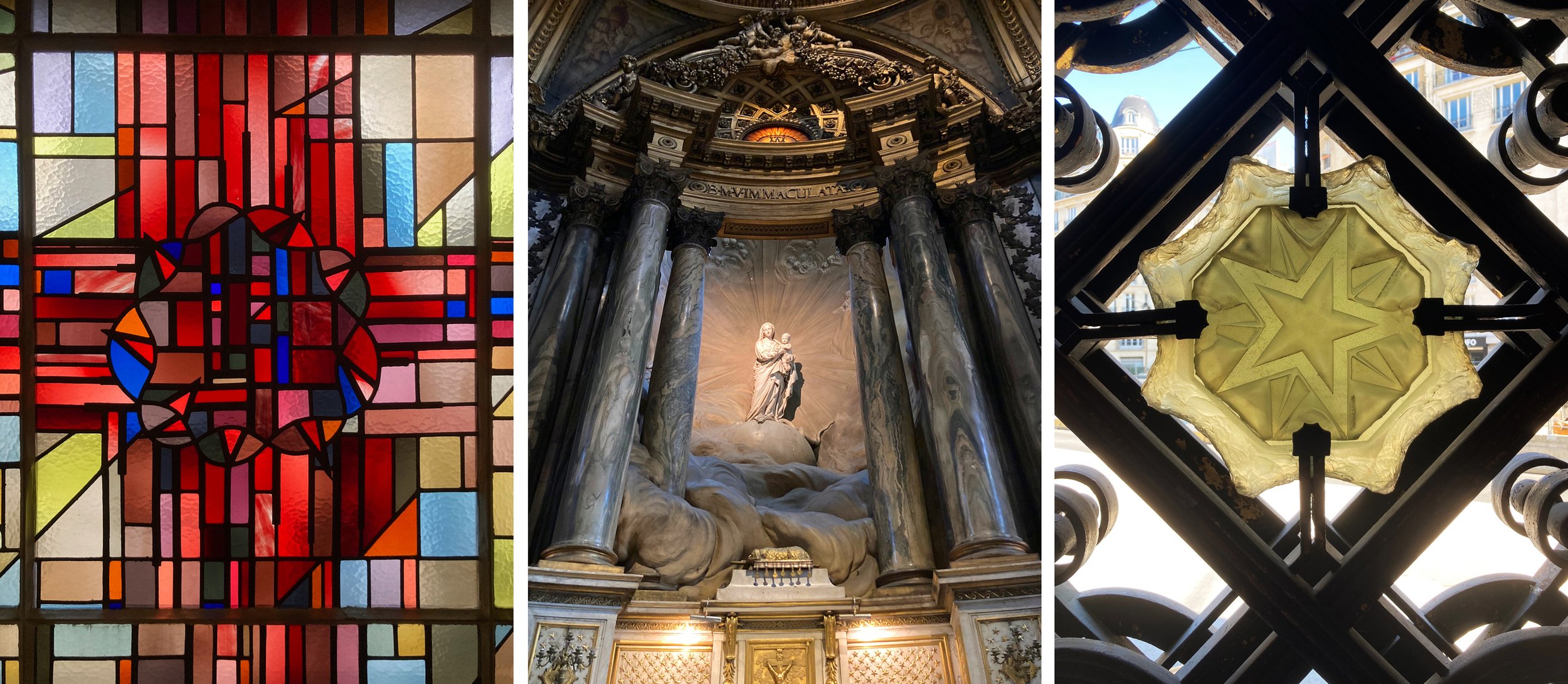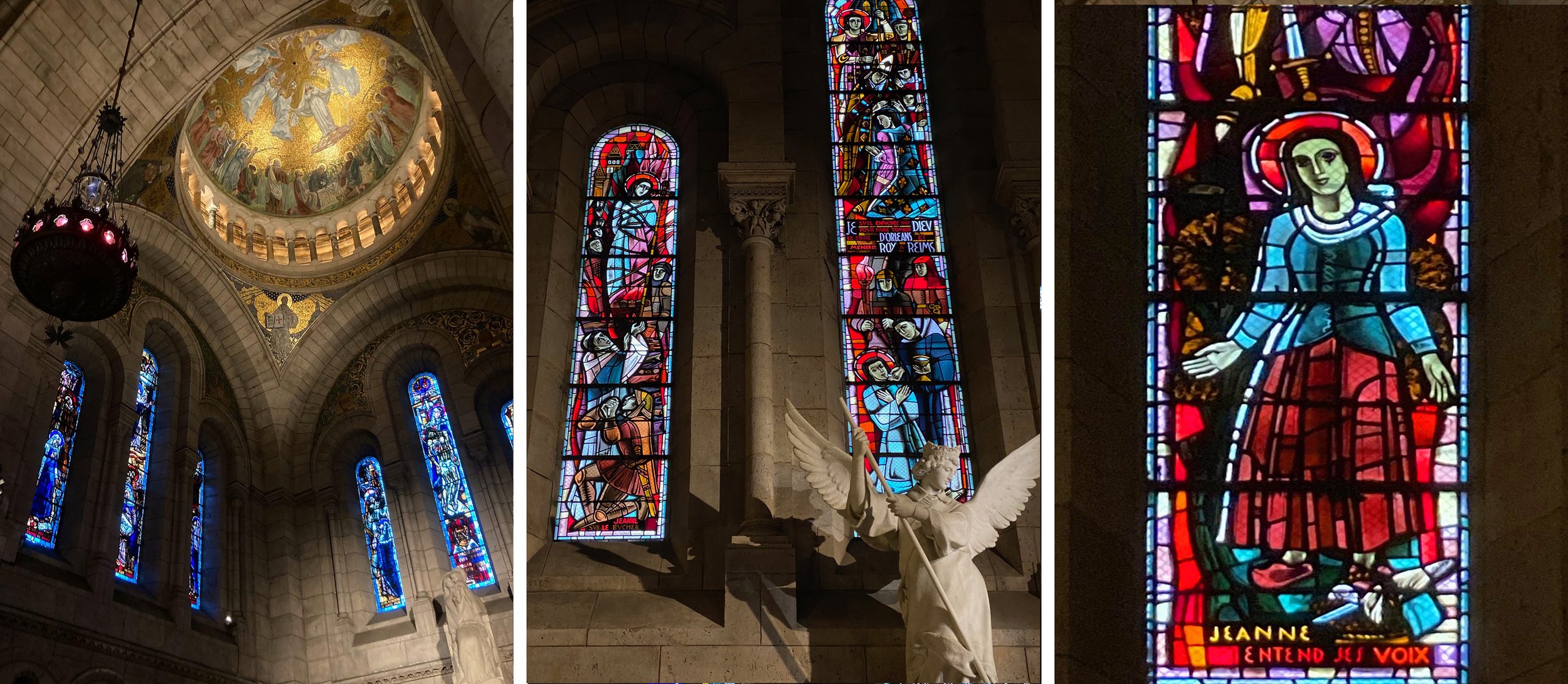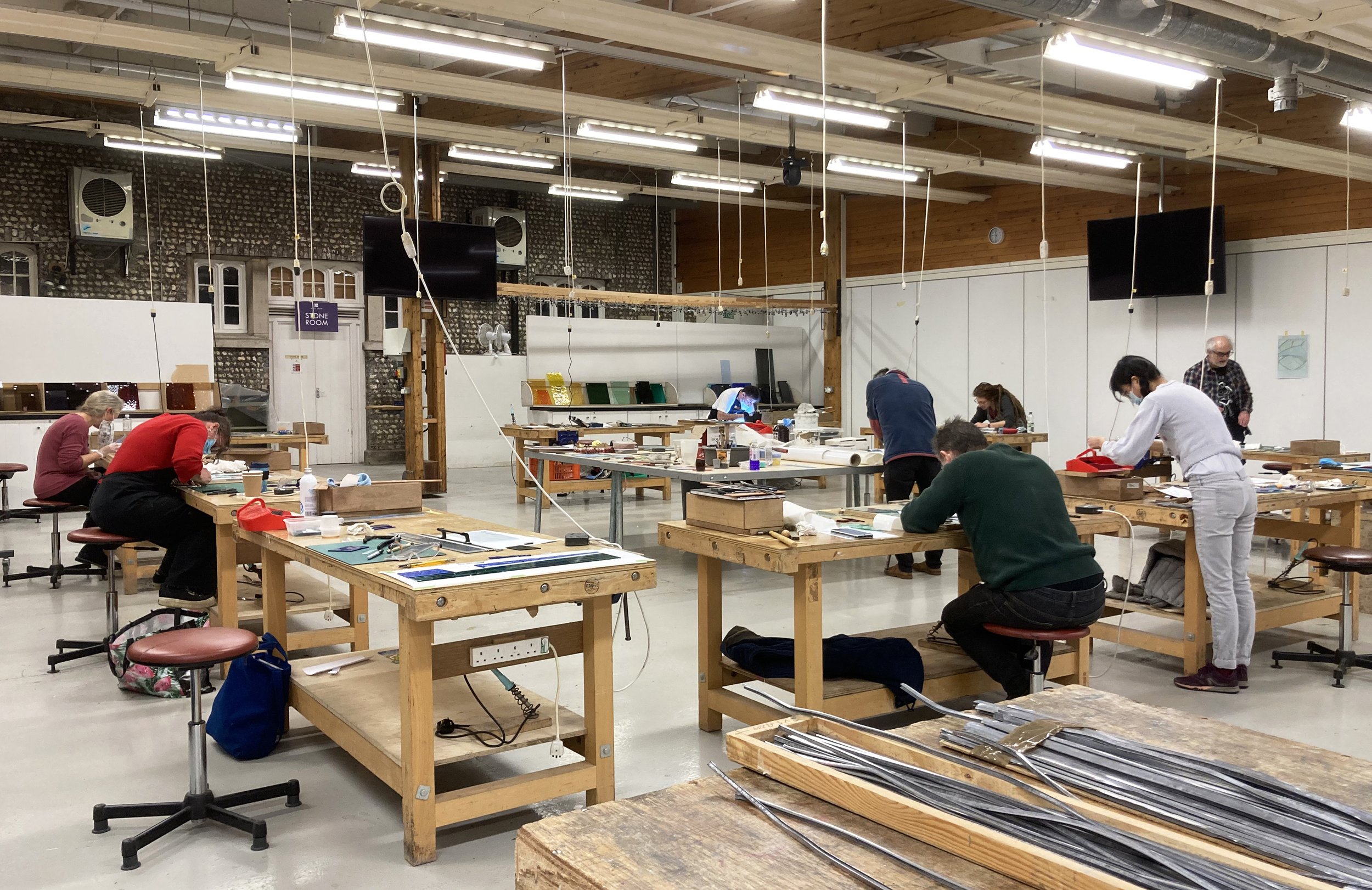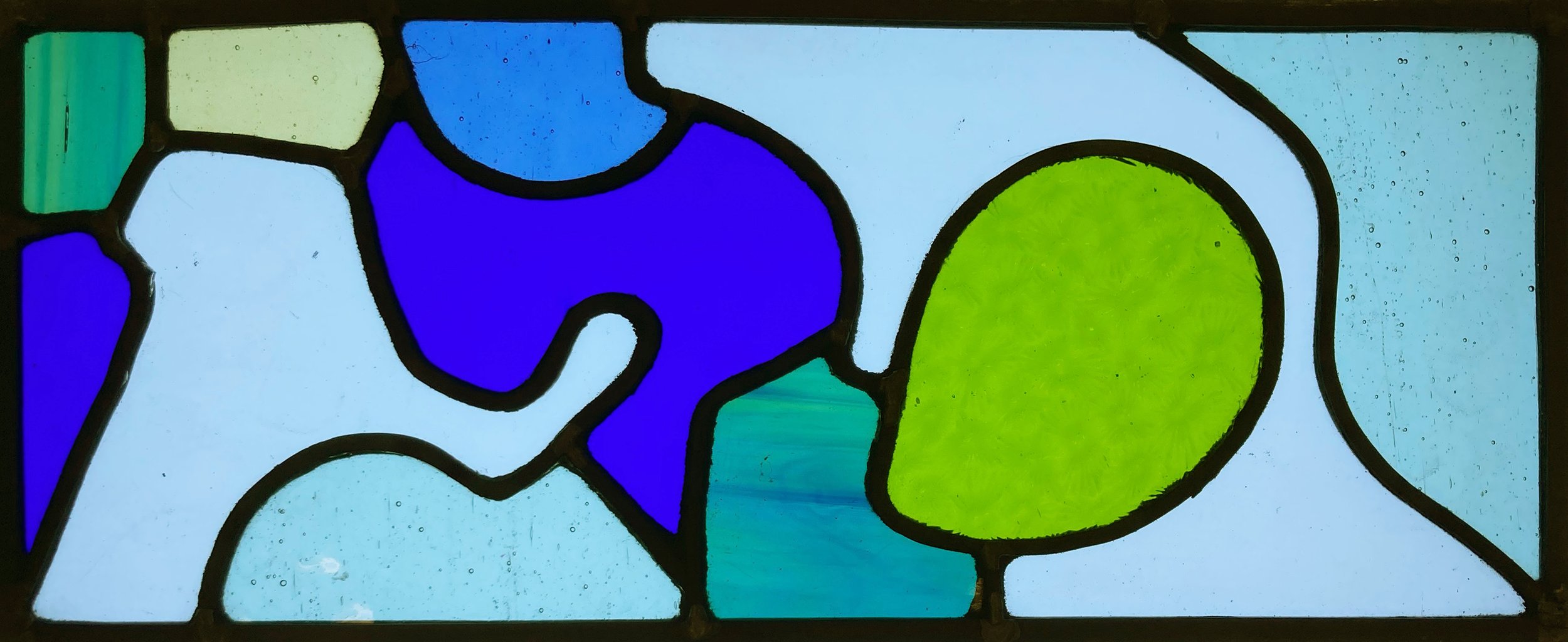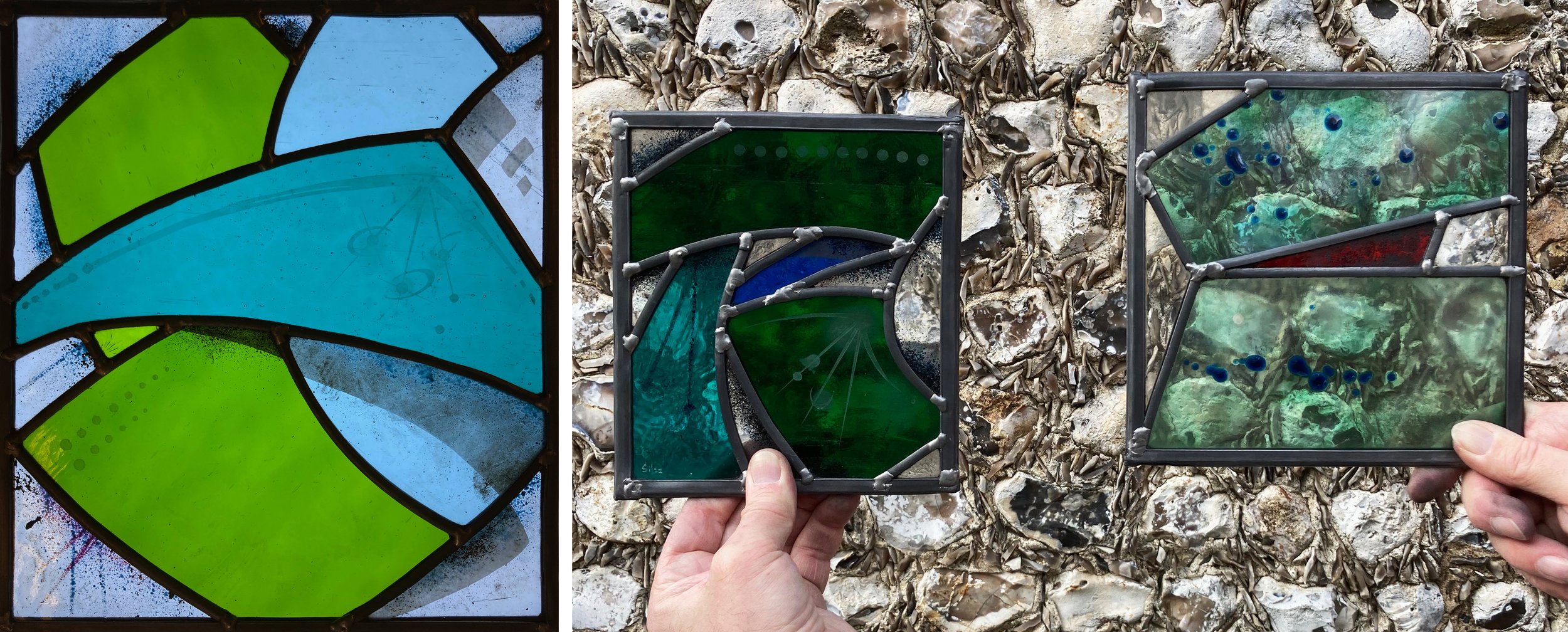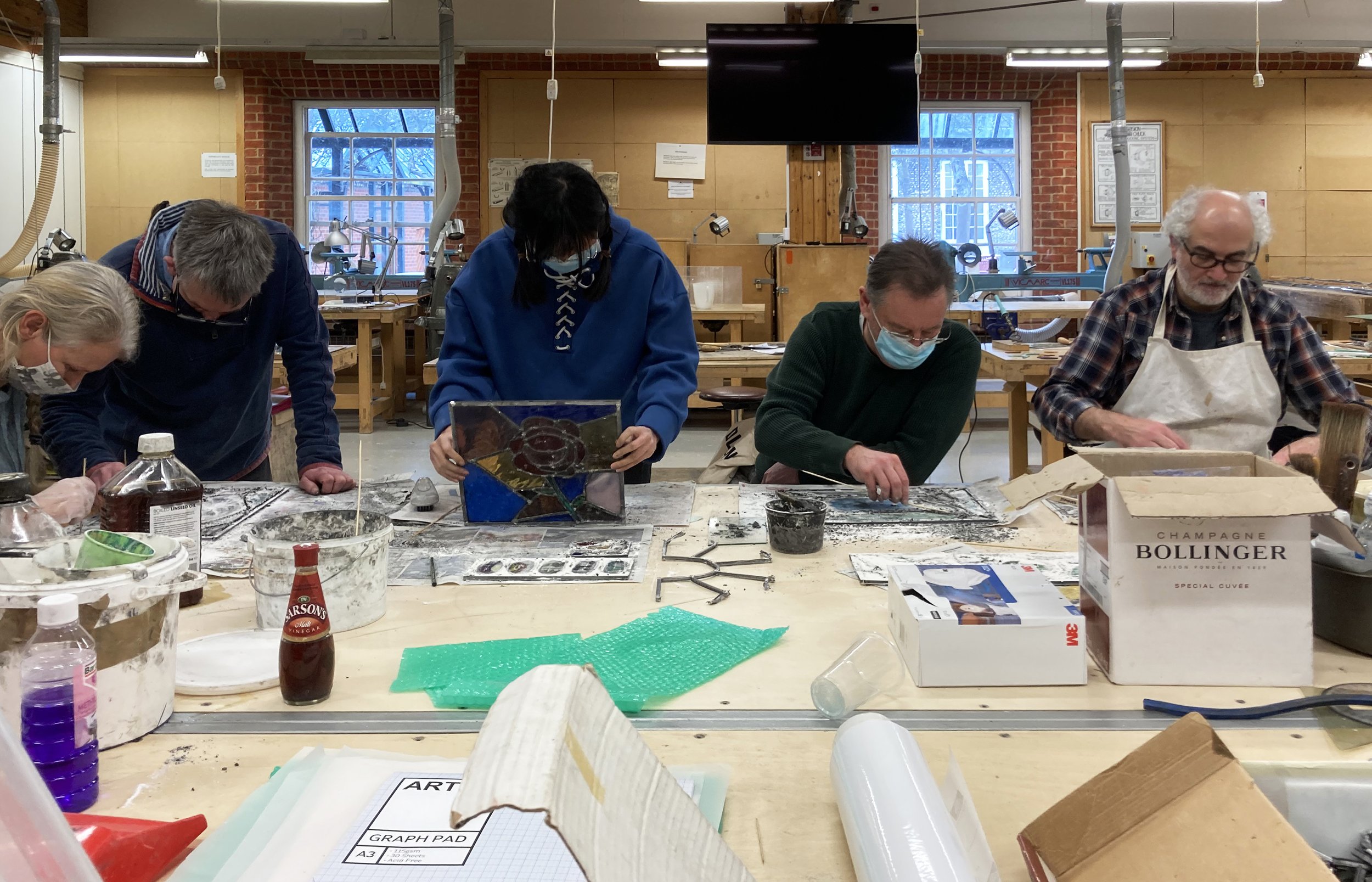Thick slabs of coloured glass on the lightbox
I’ve been using melted glass slabs for a commission - still in progress - in a gorgeous colour range. Working to commission is always slow, so in the meantime I decided to make a spontaneous smaller panel using the spare slabs. It’s very simple, four colours that look great together, the intersections of the slabs cut off and filled with another colour that is close to what I imagined the combined glass colour could be (below left). I had intended to give it a contrasting pale blue background, but then chickened out as I didn’t want to ruin the colour balance I’d achieved so used a clear textured glass instead. You can see this during the cementing process (below right) and in daylight with the lawn behind (lower right). I did also cut a background in swirling bright blue glass to check the effect (lower right). The panel measures 315 x 285 mm.
As I’m not keen on wasting glass, I used those background blues to make an alternative composition, here the darkest area is the background and the intersections are in clear glass. It’s more about textures than colours, using up the last scraps of my favourite pressed glass that’s covered in little reflective triangles and some painted pieces with intersecting circles that have been wheel cut and filled with blue enamel. The photos (clockwise from top left) show the glass pieces cut and on the lightbox, the composition with a clear background just to see, the finished panel in daylight (with the lawn behind) and my favourite photo, showing the centre detail cleaned and ready for soldering.
It still bothered me that I hadn’t carried out my original intention, so I found small leftovers of the original four colours and fitted them together with a contrasting pale blue background and a little yellow halo around the glass flower (below).
Glass flower on the lightbox and in daylight, 180 x 190 mm.





